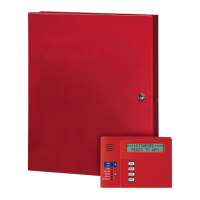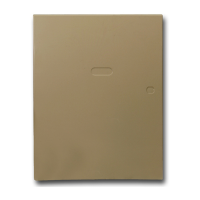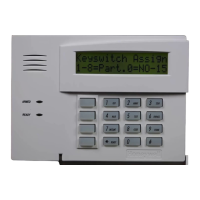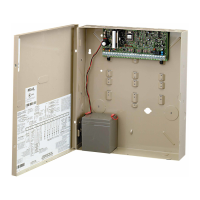Section 5 – Data Field Descriptions
5-5
FIELD TITLE and DATA ENTRIES EXPLANATION
*41
Normally Closed or EOLR (Zones
3-8)
0 = EOLR supervision
1 = N.C. loops
If EOLR supervision is selected, end-of-line resistors must be used on zones
3-8.
If N.C. loops is selected, end-of-line resistors cannot be used and only
normally closed devices must be used.
Must be set to “0” for Commercial Fire and Burglary installations.
*42
Dial Tone Pause
Enter the wait time for dial tone detection:
0 = 5 seconds; 1 = 11 seconds; 2 = 30
seconds.
Enter the time the system waits for dial tone before dialing. Applies if true dial
tone is not selected in field *43.
Must be 0 for UL installations.
*43
Dial Tone Detection
0 = disable
1 = enable
If enabled, the system waits for true dial tone. If no dial tone is detected,
control dials at end of pause programmed in field *42.
If disabled, the system pauses for seconds entered in field *42, then dials.
NOTE: Disabling may be necessary in high-noise environment telco networks
where noise can be confused with dial tone, resulting in premature dialing.
*44
Ring Detection Count
Enter 00 to disable ring detection.
Enter 01-14 for ring counts of 1-14.
Enter 15 to select Answering Machine Defeat
Mode
NOTES:
In the Answering Machine Mode, the caller should let the phone ring once,
then hang up, and call again within 30 seconds. The system, upon hearing
one ring followed by nothing, does not answer the first call, but readies itself to
pick up on the first ring of the next incoming call that is received within 30
seconds (i.e., the downloader calling again).
Must be set to “00” for Commercial Fire and Burglary installations.
*45
Primary Format
0=Low Speed; 1=Contact ID; 2=ADEMCO
High Speed; 3=ADEMCO Express
Enter the reporting format for the primary telephone number.
*46
Low Speed Format (Primary)
0 = ADEMCO Low Speed
1 = Sescoa/Radionics
Enter the low speed format for the primary telephone number.
*47
Secondary Format
0=Low Speed; 1=Contact ID; 2=ADEMCO
High Speed; 3=ADEMCO Express
Enter the reporting format for the secondary telephone number.
*48
Low Speed Format (Secondary)
0 = ADEMCO Low Speed
1 = Sescoa/Radionics
Enter the low speed format for the secondary telephone number.
*49
Checksum Verification
Enter 2 digits, one for the primary and one
for the secondary.
0 = disable
1 = enable
If enabled, the system for either or both primary/secondary formats sends a
verification digit to validate the message at the receiver without having to send
two message rounds. Selection is valid for 3+1, 4+1, and 4+2 reports.
*50
Sescoa/Radionics Select
0 = disable
1 = enable
If disabled, selects Radionics, which uses hexadecimal 0-9, B-F reporting.
If enabled, selects Sescoa, which uses only numeric reporting (0-9).
NOTE: The selection applies to both primary and secondary phone numbers.
*51
Dual Reporting
0 = disable
1 = enable
If enabled, all reports are to be sent to both primary and secondary phone
numbers.
NOTE: If used with Spilt Reporting "1" option (1*34), alarms and alarm
restores go to both primary and secondary numbers, while all other reports go
to secondary only. If used with Split Reporting "2" option, alarms and alarm
restores go to both, open/close and test messages go to secondary only,
while all other reports go to primary. If used with Split Reporting “3” option, fire
alarms and fire restore signals go to both, all other reports go to secondary
only.
NOTE: For Remote Station Applications, where separate transmission circuits
are required for Fire, Supervisory (when applicable), and Trouble signals,
option 3 must be enabled.
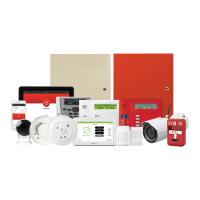
